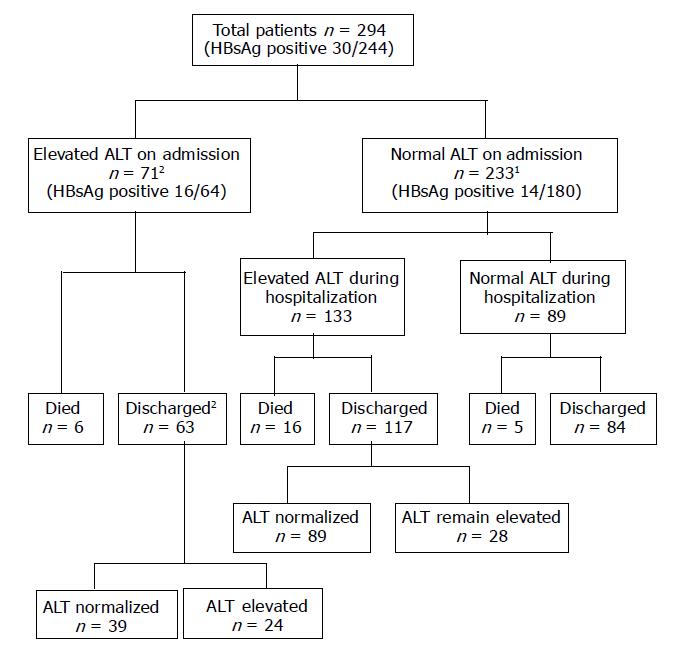Copyright
©2005 Baishideng Publishing Group Inc.
World J Gastroenterol. Apr 14, 2005; 11(14): 2148-2153
Published online Apr 14, 2005. doi: 10.3748/wjg.v11.i14.2148
Published online Apr 14, 2005. doi: 10.3748/wjg.v11.i14.2148
Figure 1 Clinical outcomes of patients included in the study.
ALT, alanine aminotransferase. 1One patient did not have serial ALT results. 2Two patients did not have follow-up ALT results after discharge.
Figure 2 A: Proportion of patients with different ALT levels at initial visit (n = 294), at peak ALT (n = 293; 1 missing data) and on last follow-up (n = 264; 27 patients died, 3 missing data).
B: Proportion of patients with different serum bilirubin levels at initial visit (n = 294) and at peak bilirubin (n = 293, 1 missing data). C: Proportion of patients with different prothrombin time at initial visit (n = 293, one missing data) and at peak prothrombin time (n = 283, 11 missing data).
Figure 3 Median ALT and serum bilirubin levels of patients admitted to Prince of Wales Hospital (n = 138) from the day of fever onset to day 21 at hospital discharge.
Both ALT and bilirubin levels were expressed as folds of ULN. Only patients who had at least one elevated ALT level during admission were included (n=104). ULN, upper limit of laboratory normal; solid line, serum ALT; broken line, serum bilirubin.
- Citation: Chan HLY, Kwan ACP, To KF, Lai ST, Chan PKS, Leung WK, Lee N, Wu A, Sung JJY. Clinical significance of hepatic derangement in severe acute respiratory syndrome. World J Gastroenterol 2005; 11(14): 2148-2153
- URL: https://www.wjgnet.com/1007-9327/full/v11/i14/2148.htm
- DOI: https://dx.doi.org/10.3748/wjg.v11.i14.2148











